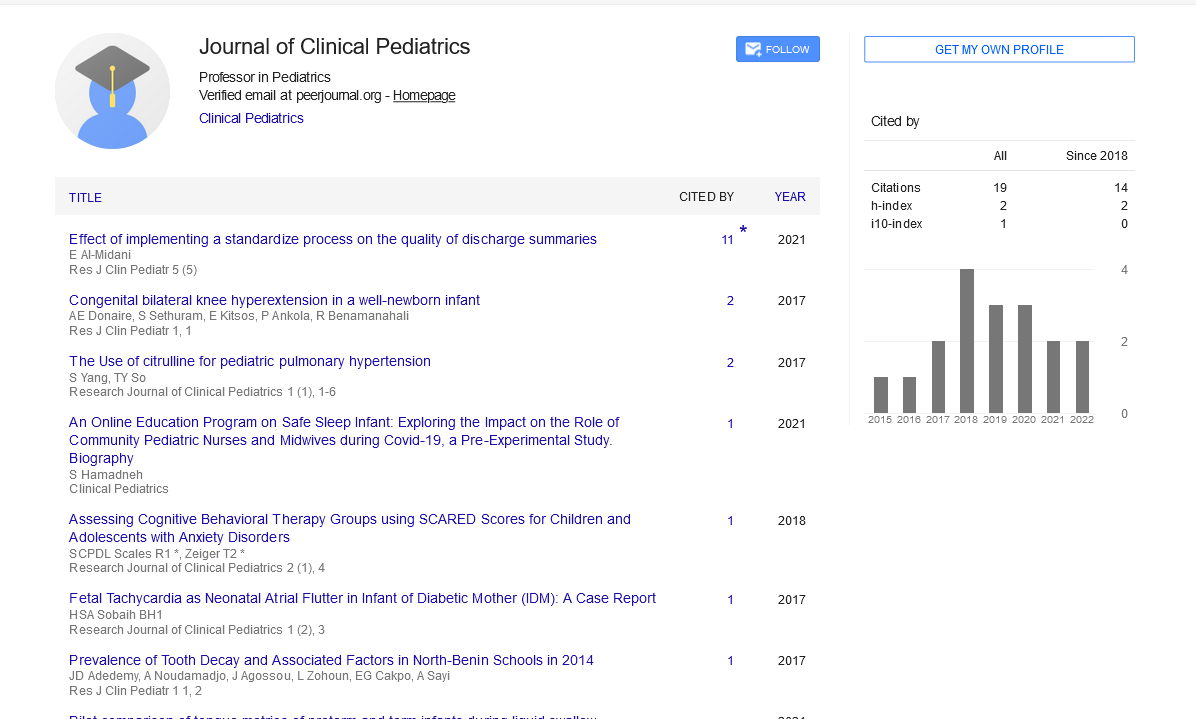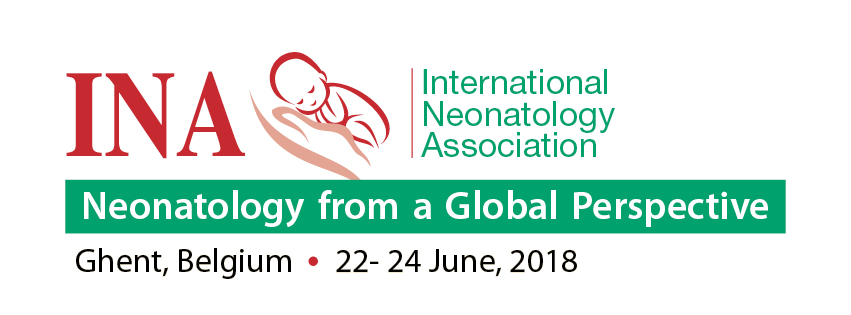Commentary, Res J Clin Pediatr Vol: 7 Issue: 2
Advancements in Pediatric Neurology: Revolutionizing Diagnosis and Treatment for Young Patients
Nakul Hiroshi*
Department of Pediatrics, Osaka Medical and Pharmaceutical University, Osaka, Japan
*Corresponding Author: Nakul Hiroshi
Department of Pediatrics, Osaka Medical
and Pharmaceutical University, Osaka, Japan
E-mail: nakul_hiroshi@ompu24.jp
Received date: 22 May, 2023, Manuscript No. RJCP-23-105511;
Editor assigned date: 25 May, 2023, PreQC No. RJCP-23-105511 (PQ);
Reviewed date: 08 June, 2023, QC No. RJCP-23-105511;
Revised date: 15 June, 2023, Manuscript No. RJCP-23-105511 (R);
Published date: 22 June, 2023, DOI: 10.4172/Rjcp.1000148
Citation: Hiroshi N (2023) Advancements in Pediatric Neurology: Revolutionizing Diagnosis and Treatment for Young Patients. Res J Clin Pediatr 7:2.
Description
Pediatric neurology is a rapidly evolving field that focuses on understanding and treating neurological disorders in children. Over the years, remarkable advancements have been made in the diagnosis and treatment of these conditions, revolutionising the landscape of pediatric neurology. These breakthroughs provide new hope and possibilities for young patients, enabling earlier detection, accurate diagnoses, and personalized treatments. Advances in diagnostic techniques have played an essential role in pediatric neurology. Imaging technologies, such as Magnetic Resonance Imaging (MRI) and Computed Tomography (CT), have become more sophisticated, allowing for detailed visualization of the brain and its structures. This enables healthcare professionals to identify abnormalities, tumors, or structural malformations with greater precision.
Additionally, genetic testing has seen significant progress, facilitating the identification of genetic mutations and inherited disorders that affect the nervous system. Next-generation sequencing and gene panel testing have enhanced the understanding of neurodevelopmental disorders, epilepsy syndromes, and neuromuscular conditions, enabling early diagnosis and tailored treatments.
The emergence of precision medicine has transformed the field of pediatric neurology. With a deeper understanding of the genetic basis of neurological disorders, treatment strategies can be personalized based on an individual's unique genetic profile. Targeted therapies, such as enzyme replacement therapies and gene therapies have shown promising results in conditions like Spinal Muscular Atrophy (SMA) and certain metabolic disorders. Furthermore, advancements in pharmacogenomics have improved medication management. Genetic testing can help predict a child's response to specific medications, allowing for personalized drug selection and dosing adjustments. This helps optimize treatment efficacy while minimizing potential adverse effects.
Advancements in neuro-rehabilitation have revolutionized the management of pediatric neurological disorders. Rehabilitation therapies, such as physical therapy, occupational therapy, and speech therapy, focus on promoting neuroplasticity-the brain's ability to reorganize and form new connections. Intensive therapy programs and innovative technologies, such as robotic-assisted therapy and virtual reality, have enhanced functional recovery and improved outcomes for children with conditions like cerebral palsy, traumatic brain injury, and stroke.
Neurostimulation techniques have shown remarkable progress in the field of pediatric neurology. Deep Brain Stimulation (DBS), originally developed for adults, is now being utilized in children with refractory movement disorders, such as dystonia and Tourette syndrome. Transcranial Magnetic Stimulation (TMS) and Transcranial Direct Current Stimulation (TDCS) are non-invasive techniques that hold promise for the management of pediatric epilepsy and other neurological conditions. These cutting-edge therapies open new avenues for treatment when traditional approaches have limited effectiveness.
Advancements in pediatric neurology are fueled by collaborative studies efforts and data sharing among healthcare institutions. Multicenter studies, consortiums, and international collaborations have allowed for larger patient cohorts, leading to more robust findings and the development of evidence-based guidelines. Sharing data and knowledge promotes faster identification of rare conditions, accelerates the discovery of new therapeutic targets, and facilitates clinical trials for novel treatments.
Conclusion
Advancements in pediatric neurology have revolutionized the diagnosis and treatment of neurological disorders in young patients. From advanced diagnostic techniques and precision medicine to neurorehabilitation, neurostimulation, and collaborative studies, these breakthroughs have transformed the landscape of pediatric neurology, providing hope and improved outcomes for children facing neurological challenges. As technology continues to advance and studies progress, it is expected that further innovative approaches will emerge, driving even greater progress in the field. Ultimately, these advancements bring us closer to a future where children with neurological disorders can lead fulfilling lives and reach their full potential.
 Spanish
Spanish  Chinese
Chinese  Russian
Russian  German
German  French
French  Japanese
Japanese  Portuguese
Portuguese  Hindi
Hindi 
